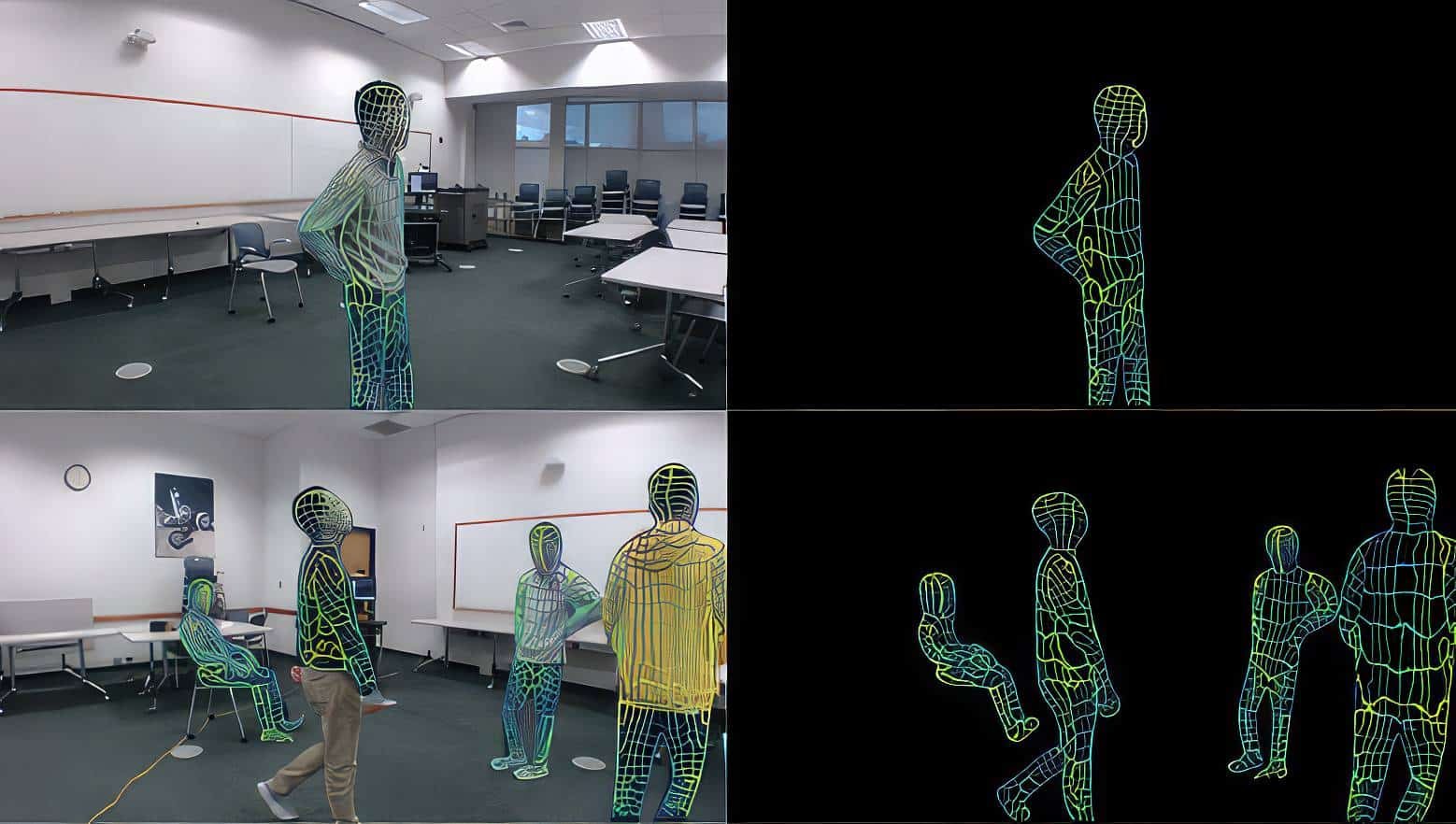In the ever-evolving landscape of technology, a recent study by Jiaqi Geng, Dong Huang, and Fernando De la Torre from Carnegie Mellon University has marked a significant milestone. This research, published on Cornell University’s arXiv in December 2022, moves away from traditional reliance on cameras and radar for human pose estimation, introducing an innovative method using WiFi signals. This shift could redefine the way we understand and implement human pose estimation in various fields.
Traditionally, pose estimation – the process of determining the position and orientation of human bodies – has been largely dependent on visual sensors like cameras. These methods, while effective in many scenarios, come with limitations, such as difficulty in poor lighting conditions or concerns about privacy in sensitive environments. The Carnegie Mellon study proposes an alternative: using the WiFi signals present in nearly every modern environment as a tool for pose estimation.
Understanding WiFi-Based Pose Estimation
The concept behind using WiFi for pose estimation is both novel and straightforward. WiFi signals, omnipresent in our homes and public spaces, interact with objects and people in their environment. By analyzing how these signals are affected by human bodies, the researchers developed a method to estimate human poses without the need for visual recording.
The study’s approach utilizes the existing infrastructure of WiFi, making it a cost-effective solution. Unlike cameras, which require a clear line of sight to the subject, WiFi signals can pass through obstacles, offering a more consistent method of detection. This is particularly beneficial in scenarios where cameras might struggle, such as in crowded spaces or areas with complex layouts.
How Does It Work?
The process developed by the researchers involves capturing the WiFi signals that bounce off people in a space and analyzing them to determine the pose of individuals.
This technique does not rely on the detailed imagery used by cameras. Instead, the research team developed a system that interprets these WiFi signals, translating them into meaningful data about human poses. This system is designed to be adaptable to various environments, whether it’s a simple room with a single person or a more complex setting with multiple individuals.
Performance and Testing: Gauging the Potential
To evaluate the effectiveness of this WiFi-based technique, the researchers conducted extensive tests. They compared the results of their system with those obtained from traditional camera-based methods. The findings were encouraging, showing that the WiFi-based system could indeed provide accurate pose estimations in many cases.
While the system demonstrated promise, the researchers also noted some challenges. For instance, the accuracy of the WiFi-based method can vary depending on the environment and the number of people present. However, these challenges are seen as opportunities for further research and refinement of the technology.
Implications and Future Applications
The implications of this research are far-reaching. In industries where human-computer interaction is crucial, such as in healthcare or entertainment, this technology offers a new way to monitor and interact with users. For instance, in healthcare, this method could be used for patient monitoring without the invasiveness of cameras. In the entertainment industry, it could provide new ways to interact with games or virtual environments.
Moreover, the privacy aspect of WiFi-based pose estimation is particularly significant. In environments where privacy is paramount, such as in homes or certain public spaces, this technology offers a way to gather useful data without the privacy concerns associated with cameras.
Challenges Ahead and Future Developments
As with any emerging technology, the path ahead for WiFi-based pose estimation is not without its hurdles. The variability in performance across different environments and scenarios is a key area for further research. Additionally, the technology needs to be refined to handle complex situations, such as crowded spaces with multiple moving individuals.
The research team at Carnegie Mellon is already looking into ways to enhance the system, including expanding the dataset and exploring the potential for 3D pose estimation. The goal is to make the technology more robust and versatile, able to handle a wide range of real-world scenarios.
The study conducted by the team at Carnegie Mellon University represents a significant step forward in the field of human pose estimation. By turning to WiFi signals, a resource that is already widely available and non-intrusive, this research opens up new possibilities for monitoring and interacting with people in various environments.
As technology continues to advance, solutions like WiFi-based pose estimation demonstrate how innovation can lead to more privacy-conscious and accessible methods. This research not only contributes to the technical field of pose estimation but also addresses broader societal concerns about privacy and data collection in the digital age.
In conclusion, the emergence of WiFi-based pose estimation is a notable development in the technological landscape. It holds the promise of revolutionizing the way we understand human movement and interaction, paving the way for new applications that are both effective

